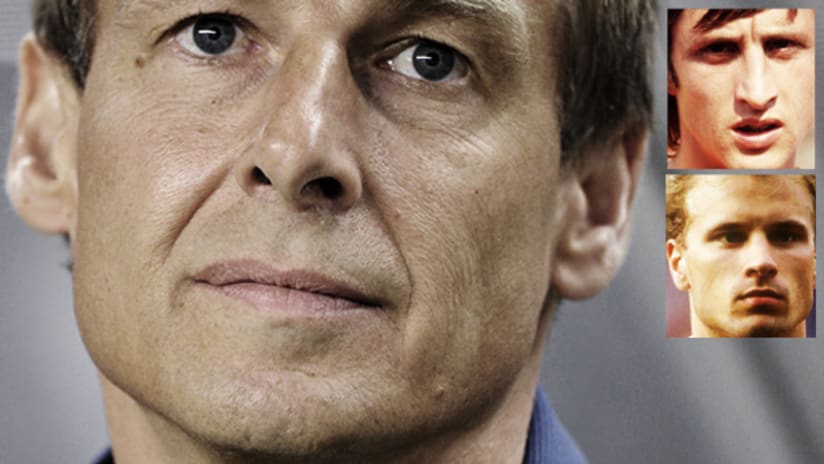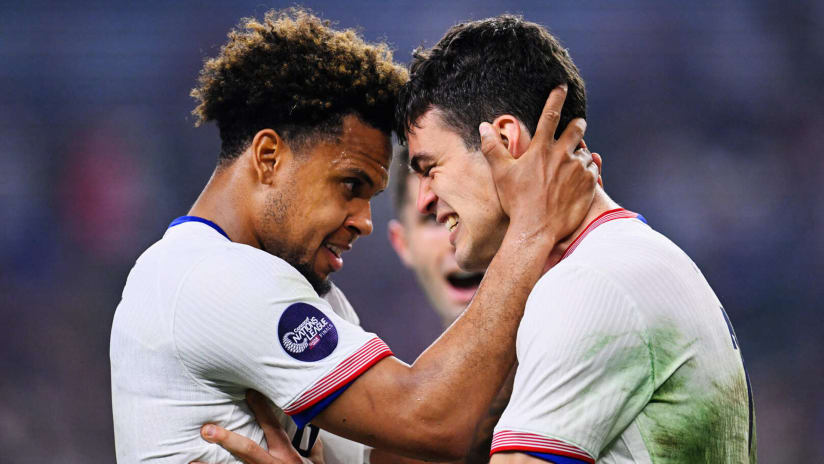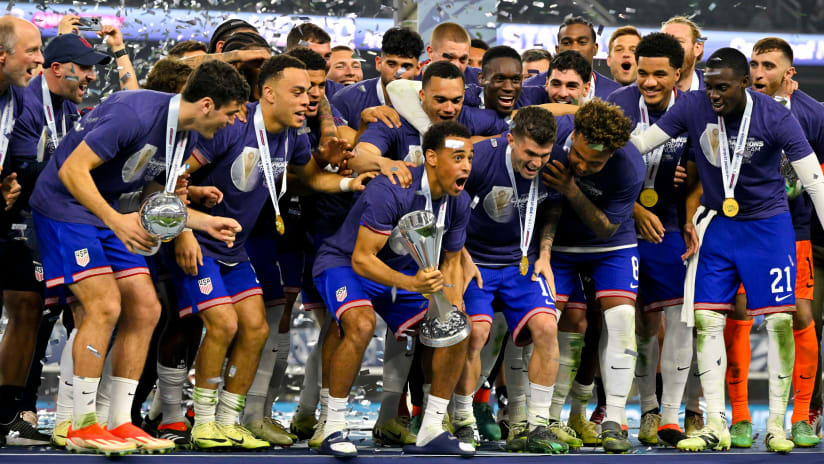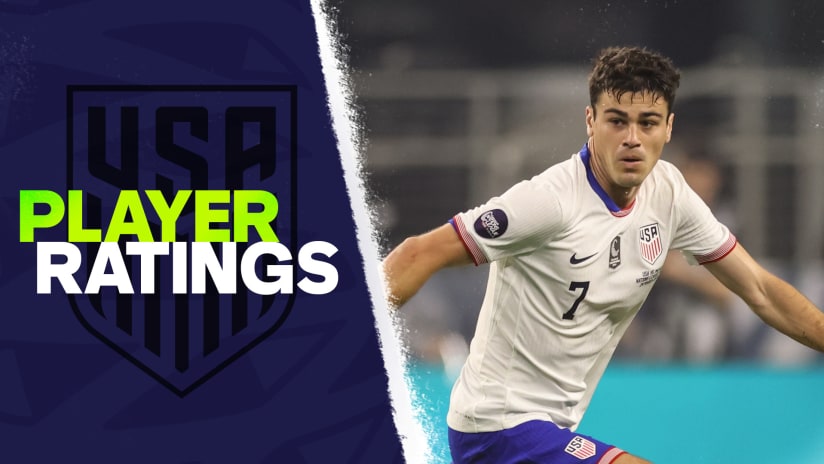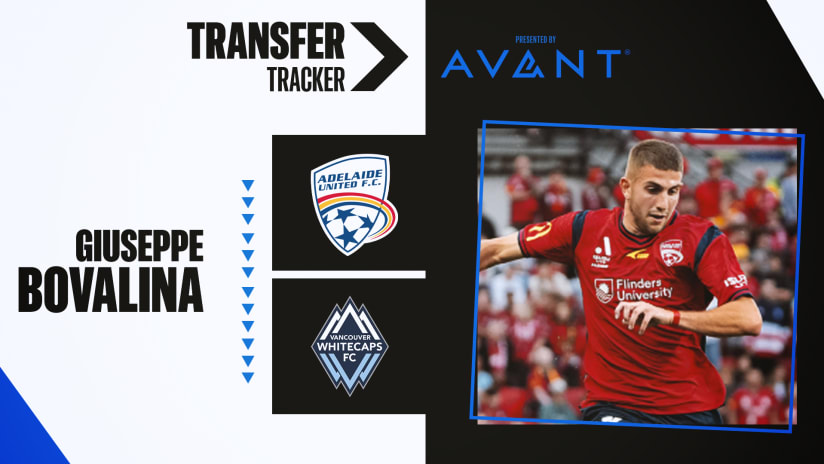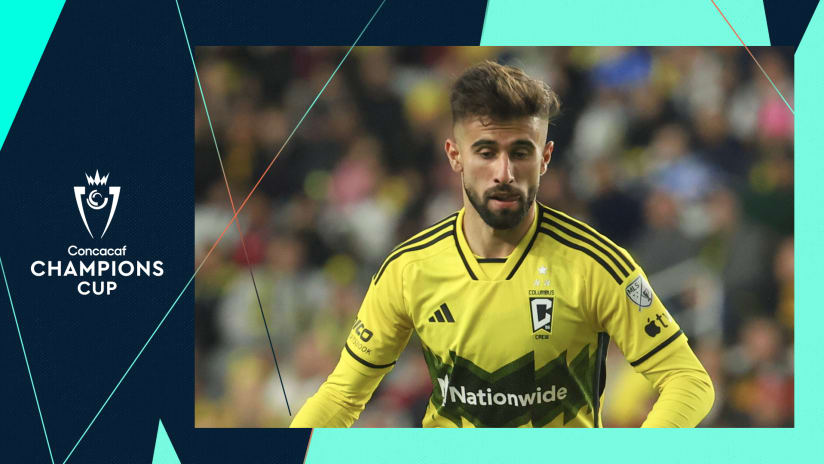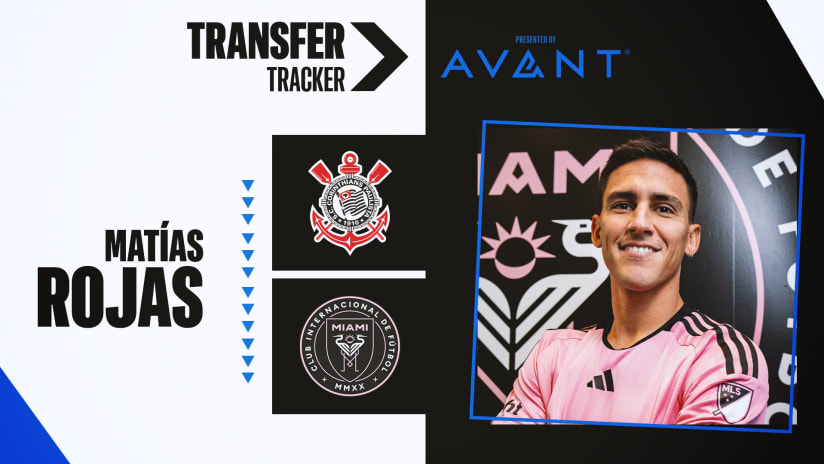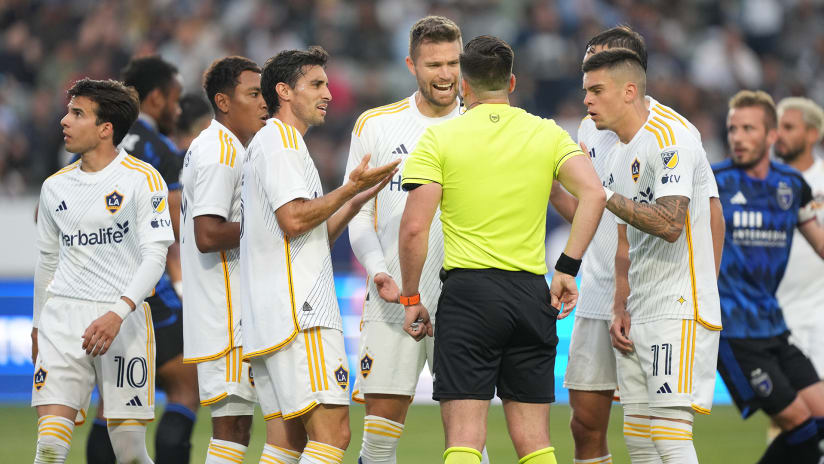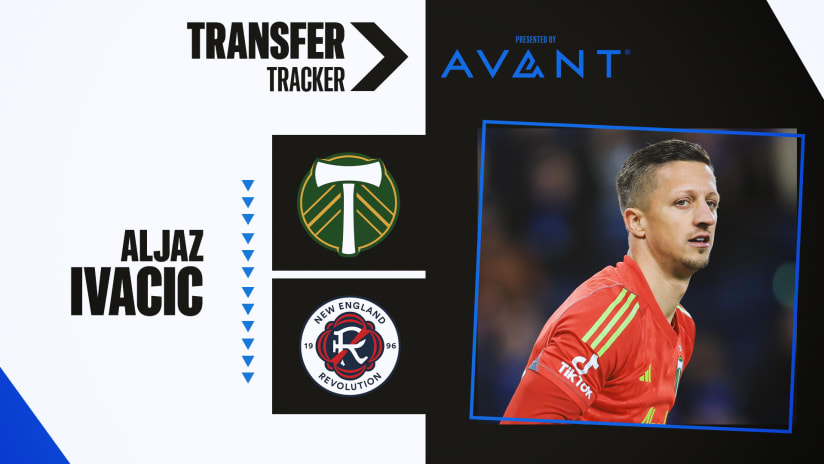AMSTERDAM — The first thing Jurgen Klinsmann did when he took over the US national team — aside from showing up at his presentation press conference in a suit and sneakers — was revamp the side's tactical formation.
After years of sticking with the tried-and-true 4-4-2 (mercifully, we'll ignore the aberration that was Steve Sampson's 3-6-1), the US are now lining up in the 4-3-3 formation inspired by the Dutch concept of Total Football.
Naturally, there has been much fretting about all of this. American boys aren't raised on the 4-3-3 like their counterparts in the Netherlands.
So as the Klinsmann Era rolls one when the US take on Honduras in Miami on Saturday night (6 pm ET, FOX Soccer/Univisión, LIVE CHAT on MLSsoccer.com), let's clear up some of the misconceptions about the 4-3-3 system.
1. The lone striker blues?
The No. 9 position is arguably the most important one in the 4-3-3. But he is not supposed to be on an island. The wingers are meant to attack on a line with him, and the playmaking midfielder regularly joins in the fun during patient attack possession.
Unless he is missing sitters or blowing hold-up touches, the striker is about the last one to wag a finger at when the team fails to create chances. The responsibility for creating attack falls on the wide players and the two more advanced midfielders. They are to create numbers forward and get balls into the box via air and land, from all directions, like they're getting paid by the set-up.
Either that or someone needs to go tell surprise Eredivisie leaders AZ Alkmaar that top gun Jozy Altidore cannot work as a "lone striker" in a 4-3-3. You may need to wait for the ovations to die down to be heard, though, as he has seven goals in 11 games across all competitions since arriving and they have 21 tallies in the first eight league games.
2. Where's the D?
This may actually be the most prevalent misconception out there. So many people look at the scoring stats for Holland and believe the Dutch don't play defense.
False.
The Dutch just prefer to play defense in the opponents' half of the field in order to get back on offense ASAP. It's a daring tactic that can lead to counterattacks, but it's been effective for years.
Yes, the Eredivisie is at or near the top of the goals-per-game chart for European leagues most seasons. The cause is not a lack of focus on defensive training or players with talent at the back.
Let's not forget that Eredivisie clubs are defending against a pure blood 4-3-3 nearly every week. Last season, 12 of the 18 teams bagged at least 53 goals in 34 games. They aren't all stocked with attackers destined for Real Madrid.
It's designed to be an extremely tough set to face, folks — which is exactly why the US wants one. Fortunately, the USMNT doesn't play in the Eredivisie.
3. Three is the magic number. Yes, it is.
On the face of it, three midfielders will obviously have trouble when facing four or five. But dig deeper and you'll see the trick: Don't think of "the midfield" as a horizontal line of players between the strikers and the backline.
Instead, think of the midfield as literally central park. Total Football's midfield stays compact, tucked into the zone between the flanks, which actually gives an advantage over teams in a 4-4-2.
That leaves the wingbacks and wingers to handle the vertical outside lanes, providing extra support as the midfielders move up and down the field. This can often make it seem as if you actually have five midfielders in action, which ties into the overall 4-3-3 concept of creating timed mismatches in specific small zones.
4. Talent matters
Yes. Of course, talent matters. But I'm not buying the argument that the US cannot adequately staff this formation. First of all, the new system is intended to gain more efficient use of the skills the team has.
Secondly, if the talent doesn't cut it somewhere, the US must coach it up. It's pretty hard to become, say, a steady international left back when wingers and right backs and popcorn salesman from the stands are always in your position.
No more excuses. Total Football doesn't make excuses.
5. "Over-lapse"
This may seem a haggling choice, but the interesting aspect here is that the USMNT often goes out of its way to prove it true.
Some folks have the idea that playing with wingers cuts off space to overlapping fullbacks, while others wonder the point of keeping attackers wide when they'll just need to come inside to make room for the overlapping defender.
In a nutshell, wingers coming into the middle are not being overlapped; they're just in a whole other lane, helping the defense stay compact. Overlap means the winger stays in the wide channel with the wingback running past his heels.
The two-man game out of the corner can really make it rain for the targets in the box. And besides, what's the worst thing that could happen if your turnovers all come next to the opposing corner flags?
So, in summation: Relax. If allowed to happen, don't be afraid to go Dutch this time.


